Key takeaways:
- Social media ROI requires measuring meaningful connections and engagement, not just likes or followers.
- Effective measurement includes tracking conversion rates, engagement discussions, and audience sentiment to gauge true audience investment.
- Key metrics like audience growth, engagement rates, and referral traffic reflect the impact of social media efforts beyond surface-level results.
- Evaluating ROI encompasses both quantitative metrics, like cost per acquisition, and qualitative feedback from fans, highlighting the value of emotional connections.
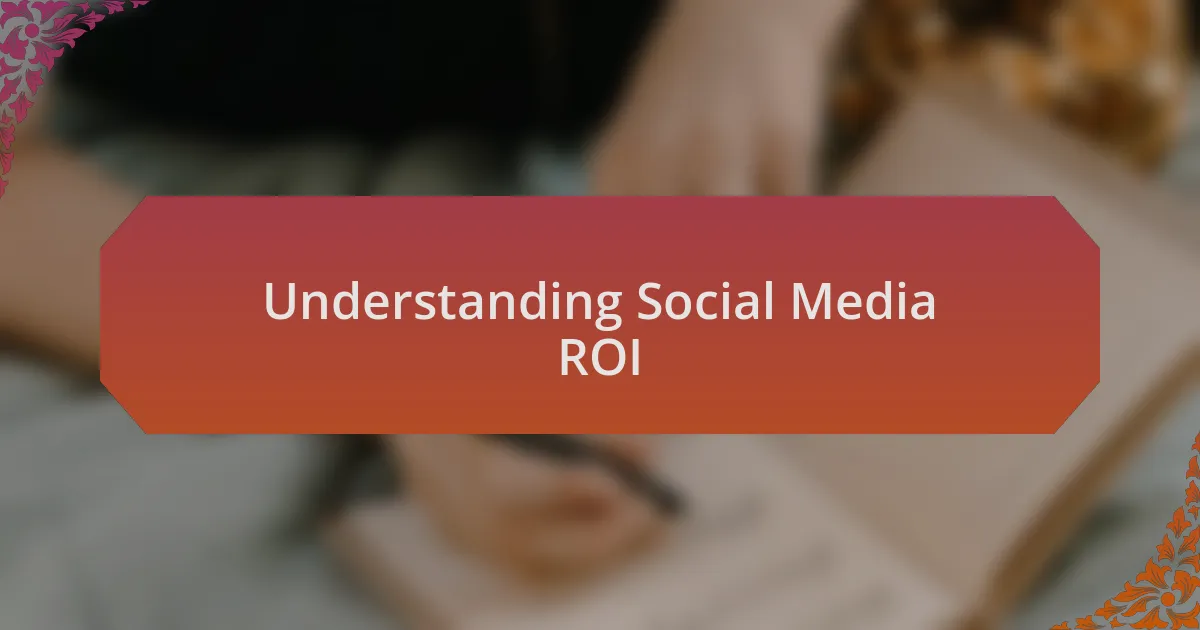
Understanding Social Media ROI
Understanding Social Media ROI is more than just crunching numbers. It’s about realizing how each interaction on your platforms can translate into meaningful connections with your audience. I remember a time when a simple Instagram post led to an unexpected surge in engagement, leaving me wondering: how can a single moment create such a ripple effect?
When we invest time and resources into social media, we need to measure not just likes or followers but the genuine interest that translates those metrics into sales or loyalty. Consider a campaign I ran that focused on storytelling; the response was overwhelming. It wasn’t just the increased streams that caught my attention; it was the heartfelt messages from fans who felt a deeper connection to the music.
I often find myself asking, what does success look like for my label on social media? For me, it’s about fostering an authentic community where fans feel valued. That’s the real treasure, and understanding how to gauge this impact is crucial in weighing the true return on investment in our digital strategy.
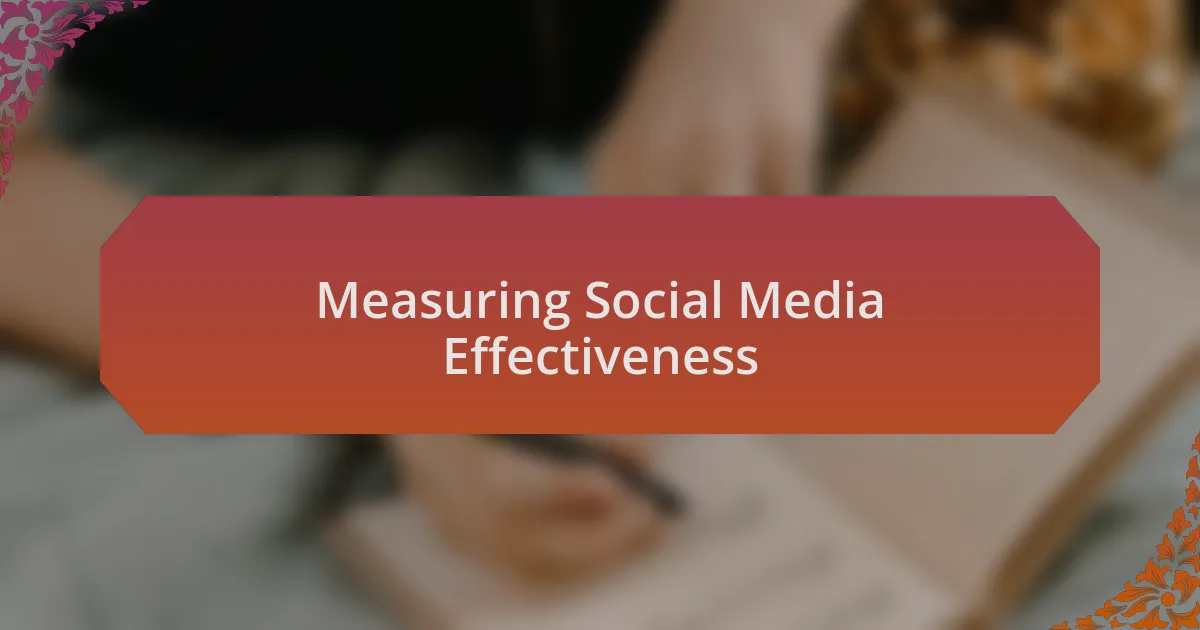
Measuring Social Media Effectiveness
Measuring social media effectiveness involves looking beyond surface metrics. I remember a campaign we launched where we tracked engagement through comments and shares rather than just likes. It was eye-opening to see how vibrant discussions emerged around our content, revealing a deeper investment in the music and the message we shared.
Another aspect that stands out is conversion tracking. After implementing specific calls to action in our posts, I noticed a direct correlation between our social media content and increased traffic to our music sales page. It became clear that our audience wasn’t just passively scrolling; they were ready to support us actively. How powerful is it when you can directly link your posts to tangible results?
Lastly, the sentiment analysis of audience interactions plays a crucial role. I often reflect on feedback from our fans – when they share their personal stories connected to our music, it adds immense value. Does the emotion in their comments indicate loyalty? Absolutely. Each positive sentiment is a valuable insight into how our music resonates and keeps the conversation alive, affirming that we’re on the right path.
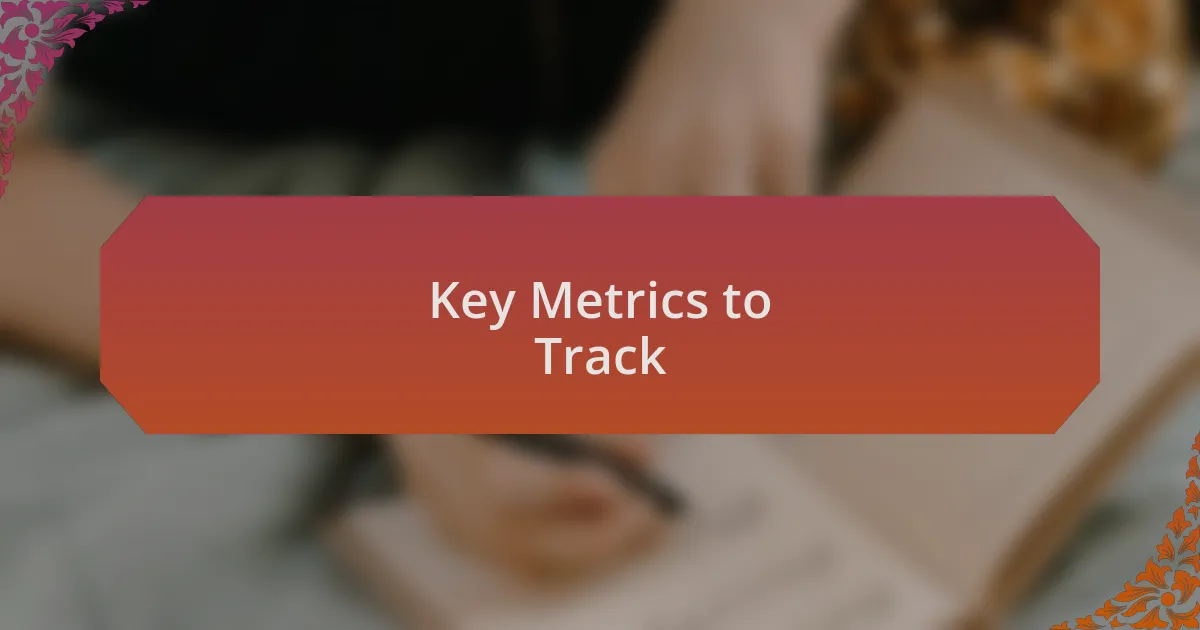
Key Metrics to Track
When tracking key metrics, audience growth is a fundamental aspect to consider. I recall observing a significant spike in our follower count after releasing a behind-the-scenes video of our recording process. It wasn’t just about the numbers; it reflected genuine interest in our journey. Have you ever felt that excitement when your community begins to expand? It’s a reminder that people crave authentic connections with art and the artists behind it.
Engagement rates also deserve our attention. In one campaign, I began encouraging fans to share their favorite lyrics from our songs. The resulting posts weren’t just shares; they turned into a community-driven conversation that deepened our bond with listeners. It makes me wonder: how often do we underestimate the power of invite-based interactions? When fans share their favorite lines, it transforms them from mere observers into passionate advocates.
Lastly, referral traffic serves as an important metric that illustrates how well your social media efforts work to drive actions outside those platforms. I remember being thrilled the first time I saw a noticeable increase in visits to our band’s website following strategic posts that linked directly to our merch and music releases. It was proof that our social presence was more than just noise; it translated into real-life engagement. Isn’t it rewarding to see social media turn into action?
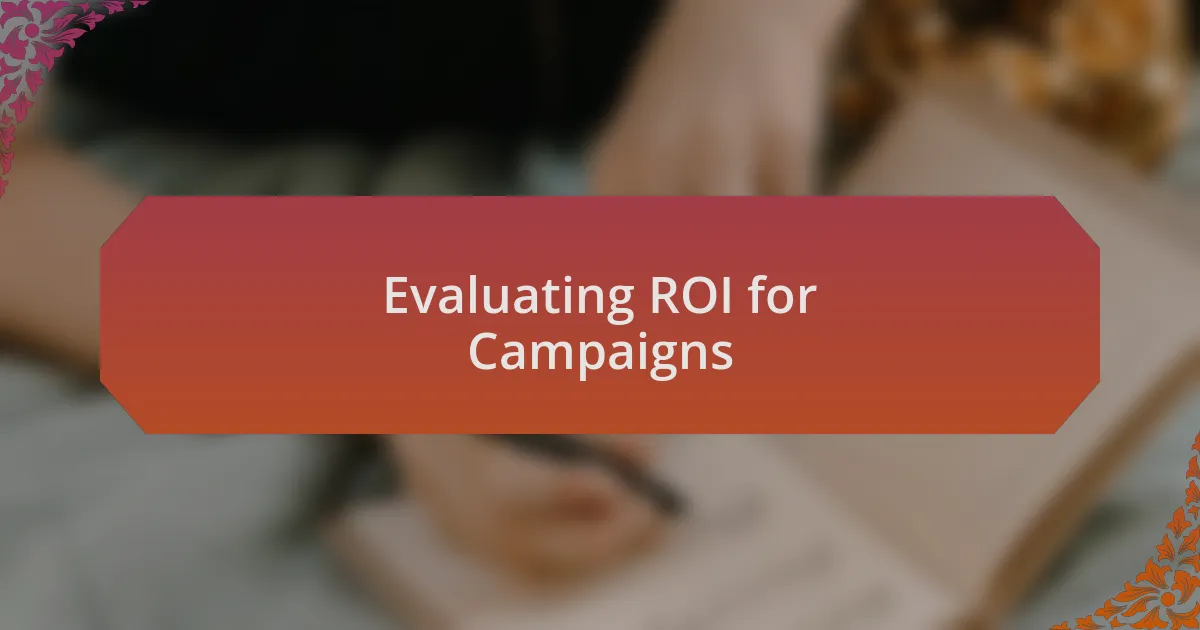
Evaluating ROI for Campaigns
Evaluating the return on investment (ROI) for your campaigns can feel daunting, but it’s essential for understanding their effectiveness. One approach I’ve found valuable is calculating the cost per acquisition (CPA). For instance, after a targeted ad campaign for an EP release, I realized we spent about $100 to gain five new fans directly linked to our ads. I couldn’t help but ask myself: was that investment worth it? When I saw their engagement grow over time, I knew it was.
Another crucial factor in assessing ROI is analyzing conversion rates. In one memorable campaign, we launched a contest offering exclusive merch. The spike in newsletter sign-ups during that period caught me by surprise. It made me reflect: how many more fans could we engage if we consistently created opportunities for them to interact with us? That experience taught me that evaluating ROI isn’t just about immediate returns; it’s about establishing longer-term relationships.
Lastly, don’t overlook the qualitative impacts alongside quantitative metrics. After one campaign, I received heartfelt messages from fans expressing how much our music connected with them. While these sentiments may not have a straightforward monetary value, they represent an invaluable aspect of our brand’s growth. Isn’t it fascinating how emotional connections can ultimately drive loyalty and, in turn, financial returns?
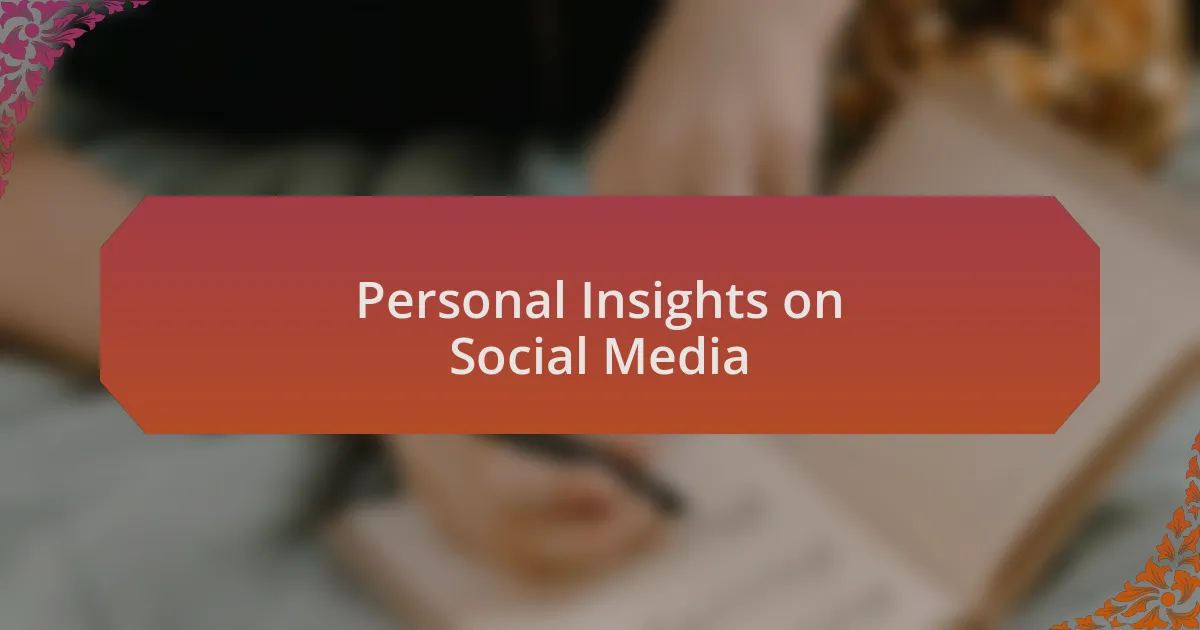
Personal Insights on Social Media
Social media has transformed how we connect with our audience. I recall a time when we shared a behind-the-scenes video of our band rehearsing for a live show, and the response was overwhelming. Fans shared their excitement in the comments, and I realized how these authentic glimpses foster deeper relationships. Isn’t it fascinating how just a few moments of vulnerability can turn casual listeners into dedicated supporters?
In my experience, the personality of our brand shines brightest on platforms like Instagram and Twitter. I once posted an honest reflection about the challenges of the music industry, and it sparked an outpouring of support from both fans and fellow artists. This exchange of thoughts reminded me that social media isn’t just about promotion; it’s a space for shared experiences that resonate on a personal level. Have you ever thought about how authenticity can cultivate a loyal community?
Finally, engaging with our audience in real time has proven invaluable. I vividly remember a livestream Q&A where I addressed fan questions directly. The intimacy of that moment left an indelible mark on both my fans and me. It made me ponder: how often do we seize the opportunity to create such personal connections? Each interaction can enhance our understanding of our audience’s needs and passions, driving us to create music that truly reflects their experiences.